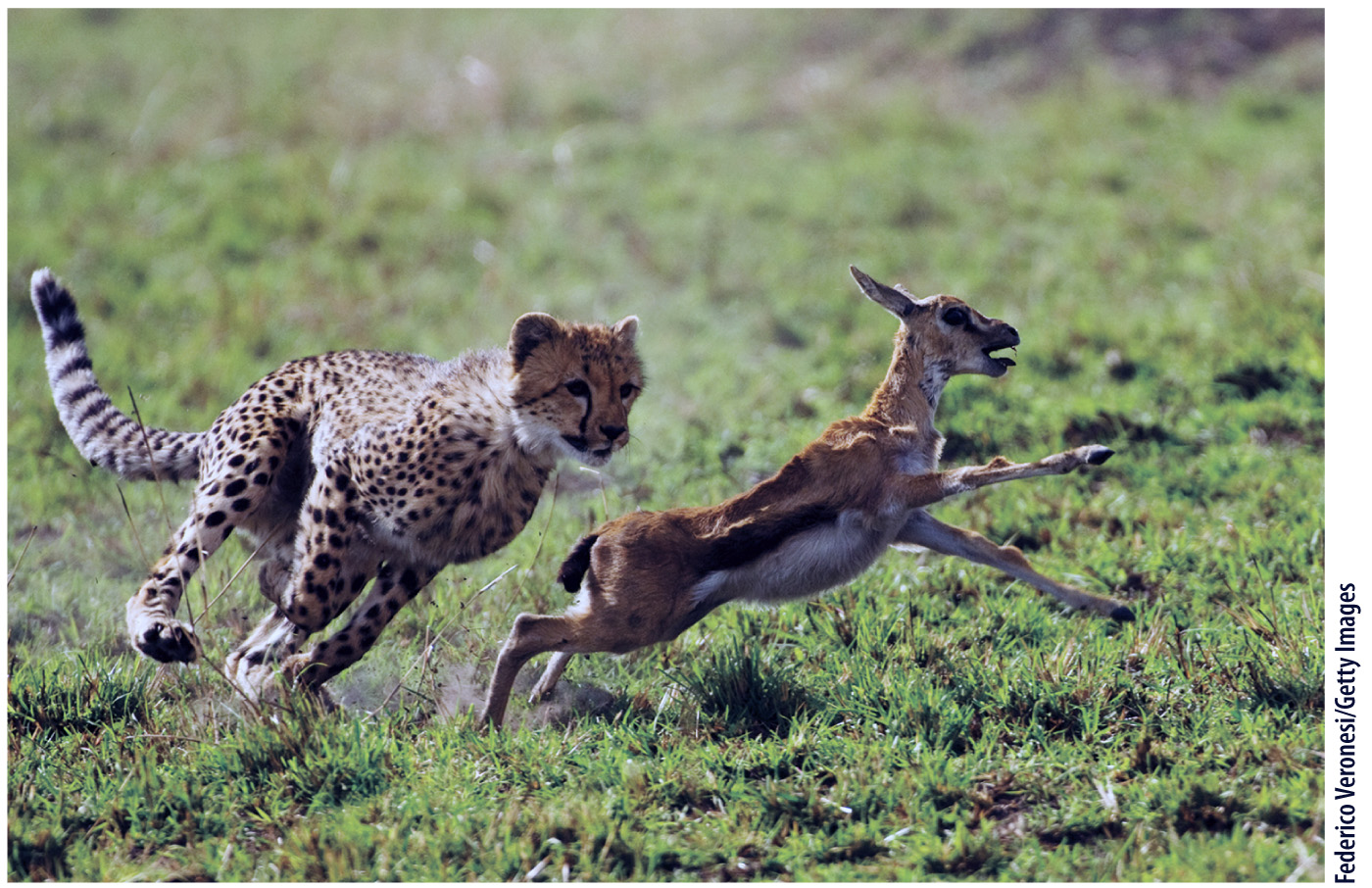CASE 7 PREDATOR–
How does the endocrine system influence predators and prey?

The endocrine system works closely with the nervous system to enable animals to respond to external cues in the environment. In Chapters 35 and 36, we discussed how prey animals, such as gazelles, use visual and olfactory cues processed by the nervous system to detect the distant movement of a predator, such as a lion (Fig. 38.12). We saw how the sympathetic nervous system, in the fight-
These actions are coordinated by the endocrine system. The sympathetic nervous system sends axons to the adrenal medulla (see Figure 38.10), the inner part of the adrenal gland. In response to stimulation by the sympathetic nervous system, cells of the adrenal medulla secrete two hormones, epinephrine and norepinephrine (also known as adrenaline and noradrenaline). These are hormones released by the adrenal gland with targets throughout the body, leading to the physiological changes of the fight-
The same set of responses occurs when, walking along a deserted sidewalk, we note a shadowy movement or hear a footstep behind us. The perceived threat sets in motion a coordinated physiological reaction, mediated by the combined action of the nervous and endocrine systems. These changes make us alert and ready for action to avoid or resist a perceived threat. They also inhibit digestion and eliminate a sense of appetite.
Earlier, we considered the importance of homeostasis in maintaining a variety of parameters, such as temperature and glucose levels, at a steady level. In this case, there is an adjustment of the set points of different organs, which is critical in enabling an animal to respond to external cues and adjust its physiological response appropriately. When the real or perceived threat is gone, the body is able to return to its prior state by reestablishing earlier set points.
Set points are also changed when an animal acclimatizes to a new environment, such as when it moves from fresh water to a marine environment or to a new altitude. An adaptive change in body function to a new environment is referred to as acclimatization. Examples of acclimatization are the increase in the number of red blood cells and their capacity to carry more oxygen at higher altitude (Chapter 39) and seasonal changes in the fur of mammals that achieve the insulation required to maintain a stable body temperature (Chapter 40). These physiological changes result from establishing new set points in a process coordinated by the endocrine system.